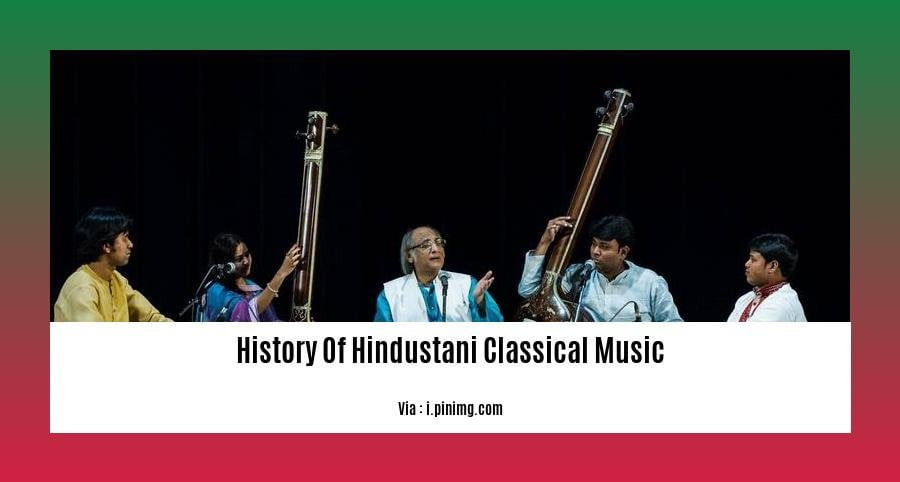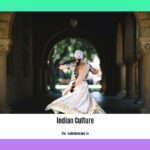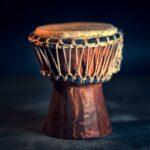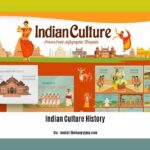Voyage into the captivating world of Hindustani Classical Music, a genre steeped in centuries of tradition and innovation. From ancient origins to modern-day maestros, let’s explore the enchanting melodies and rhythmic intricacies that have captivated music lovers for generations. [A Glimpse into the Timeless Melodies: Unveiling the History of Hindustani Classical Music] will take you on a journey through the rich heritage of this genre, its evolution, and its enduring significance in the tapestry of Indian culture.
Key Takeaways:
- Hindustani classical music is the classical music of the North Indian subcontinent.
- It diverged from Carnatic classical music around the 12th century.
- Ragas and talas are central to both Hindustani and Carnatic music.
- Dhrupad, khyal, and tarana are major vocal forms of Hindustani classical music.
- Veena, sitar, and sarod are instruments commonly used in Hindustani classical music.
- Gharanas are unique to Hindustani classical music and are used for teaching and learning.
- Hindustani classical music is an integral part of Indian culture and is performed worldwide.
- Notable exponents include Ustad Bismillah Khan, Pandit Bhimsen Joshi, and Ravi Shankar.
History of Hindustani Classical Music
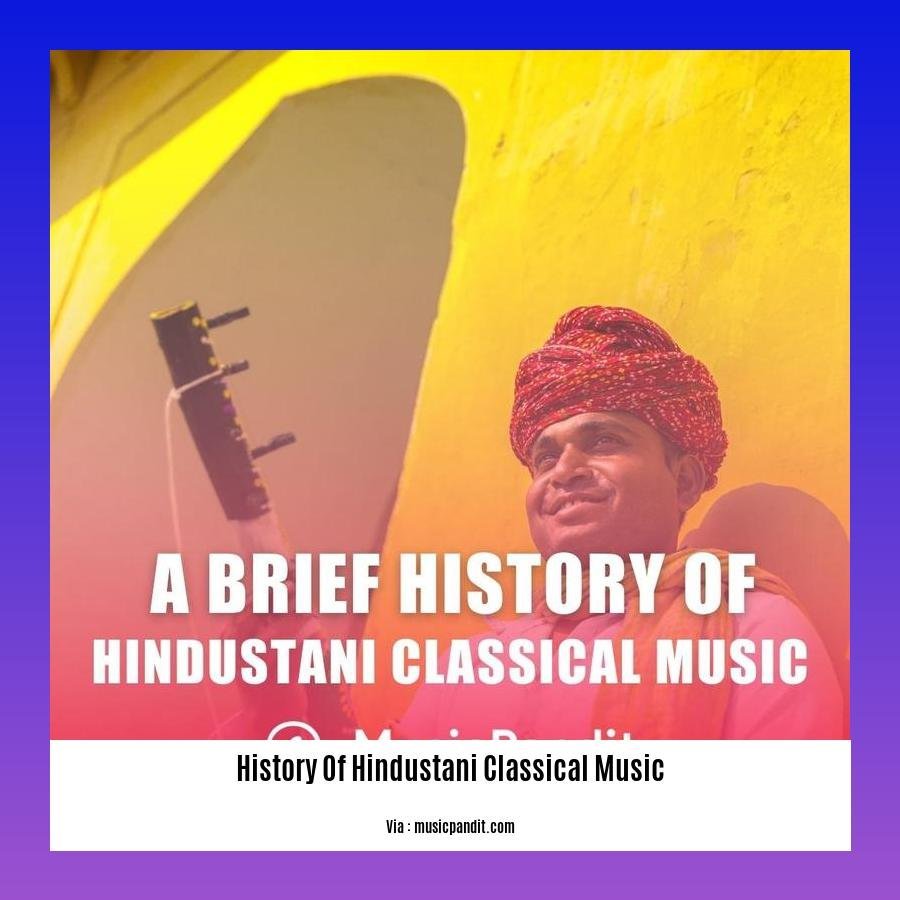
In the vast expanse of musical traditions, Hindustani classical music stands as an embodiment of India’s rich cultural heritage. Centuries of artistry and devotion have nurtured this genre, creating a musical landscape that is both elaborate and mesmerizing.
A Journey Through the Ages
The origins of Hindustani classical music can be traced back to ancient India, where it evolved from the sacred music of Hindu temples. The earliest known treatise on the subject, the Natyashastra, dates back to the 2nd century BC. This comprehensive text establishes the theoretical framework for music, dance, and drama, providing a foundation for the development of classical music in India.
In the medieval period, patronage from royal courts played a crucial role in the flourishing of Hindustani classical music. Kings and nobles sponsored musicians and dancers, creating an environment that encouraged experimentation and innovation. This period witnessed the rise of gharanas, or musical lineages, each with its distinctive style and repertoire.
The Soul of India
Hindustani classical music is deeply intertwined with Indian culture and spirituality. It is an integral part of religious ceremonies, festivals, and celebrations. The music’s rich symbolism and philosophical underpinnings allow it to communicate on multiple levels, touching both the heart and the mind.
Instruments of Expression
Hindustani classical music is performed using a variety of instruments, including the sitar, sarod, veena, tabla, and harmonium. Each instrument has its unique characteristics and range of expression, contributing to the overall sonic tapestry. The interplay between the instruments creates a dynamic and immersive musical experience.
Masters and Legends
The history of Hindustani classical music is replete with legendary maestros who have shaped its evolution. From the revered dhrupad singers of the medieval era to the virtuosic khyal vocalists of the 19th century, these musicians have left an indelible mark on the tradition.
Preserving a Legacy
Hindustani classical music faces challenges in the modern era, as globalization and Western influences reshape the musical landscape. However, there remains a strong commitment to preserving this precious heritage. Music schools, academies, and festivals play a vital role in passing down the tradition to future generations.
Conclusion
Hindustani classical music is a testament to the enduring power of tradition and the human spirit. Its captivating melodies and profound insights into the human condition continue to resonate with audiences worldwide, making it a timeless and cherished art form.
Do you know that First Aid was first prevalent in the prehospital setting? Do you want to know more about its history? Then check this out: History of First Aid.
Are you a fan of football and curious to know how it all began? Dive into the History of Football Rules to learn about the evolution of the game.
Have you ever wondered about the origins of those mesmerizing fountains? Embark on a journey through the History of Fountains to discover their fascinating evolution.
Legends and Legacy: Highlight the contributions of renowned musicians and vocalists who have shaped the tradition, such as Tansen, Amir Khusro, and more.
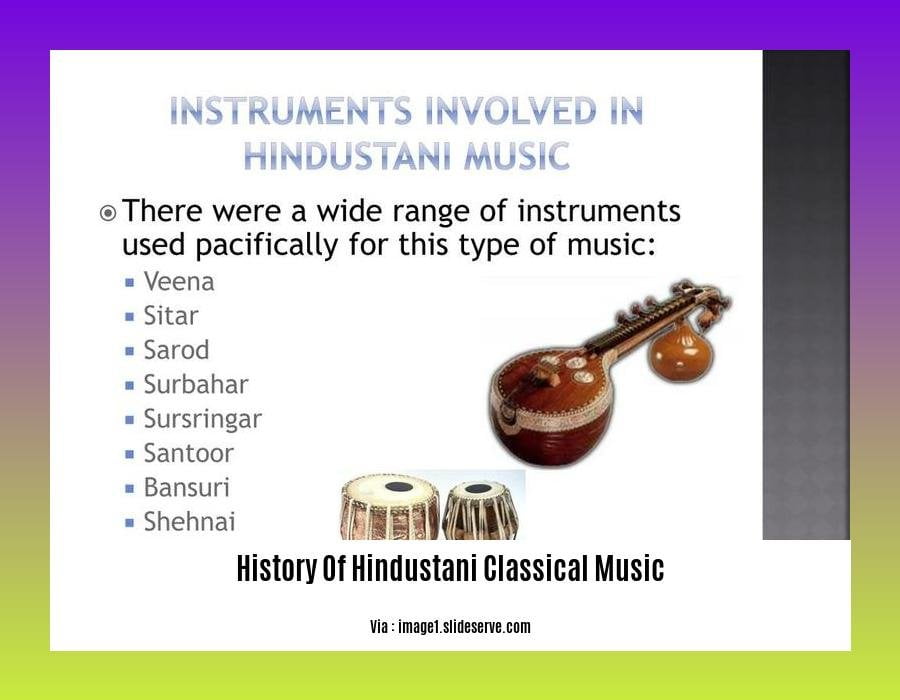
In the annals of Hindustani classical music, a constellation of legendary musicians and vocalists has left an indelible mark on its history and legacy. Their contributions have shaped the tradition, inspiring and influencing generations of artists. Let’s delve into the lives and legacies of some of these musical luminaries:
Tansen: A Melody Immortalized
- Tansen, born Ramtanu Pandey, stands as one of the greatest musicians in Indian history. His virtuosity earned him the title of ‘Mian Tansen’ and the distinction of being among the ‘Nine Jewels’ in Emperor Akbar’s court.
- His compositions and improvisations in dhrupad, a classical genre, were legendary, blending profound spirituality with intricate melodies.
- Tansen’s legacy lives on through the annual ‘Tansen Samaroh’, a national music festival held near his tomb in Behat, Madhya Pradesh.
Amir Khusro: A Bridge Between Cultures
- Amir Khusro, a 13th-century poet, musician, and scholar, played a pivotal role in bridging Indian and Persian musical traditions.
- He introduced new instruments like the sitar and tabla, enriching Hindustani classical music’s sonic landscape.
- Khusro’s compositions, spanning qawwali, ghazal, and khayal genres, showcased his versatility and lyrical prowess.
Baiju Bawra: A Voice of Pure Emotion
- Baiju Bawra, a 16th-century musician, was renowned for his emotive and expressive khayal renditions. His compositions conveyed a depth of feeling and pathos, captivating audiences with their intensity.
- His rivalry with Tansen, often depicted in folklore and popular culture, highlights the competitive spirit that existed among musicians during that era.
Key Takeaways:
- Legendary Musicians: Hindustani classical music is adorned with legendary figures who have left a lasting impact on the tradition, each contributing to its evolution and richness.
- Diverse Genres and Styles: These maestros excelled in various genres, from dhrupad to khayal, demonstrating the diversity and versatility of Hindustani classical music.
- Cultural Exchange: Musicians like Amir Khusro facilitated cultural exchange between India and Persia, introducing new instruments and musical influences.
- Inspiration and Legacy: The contributions of these legendary artists continue to inspire and influence contemporary musicians and vocalists, ensuring the tradition’s vitality.
Sources:
- Tansen – Wikipedia
- Baiju Bawra – Britannica
The Guru-Shishya Parampara: A Legacy of Knowledge and Tradition in Hindustani Classical Music
The Guru-Shishya Parampara, also known as the teacher-student tradition, holds a central place in Hindustani classical music. This sacred relationship has played a pivotal role in preserving and transmitting the knowledge, techniques, and nuances of this renowned musical genre across generations.
In this tradition, the Guru (teacher) is not just an instructor but a revered mentor, guide, and source of wisdom for the Shishya (student). The Guru imparts not only musical knowledge but also life lessons, instilling values such as discipline, dedication, humility, and respect in the Shishya.
The Guru’s guidance extends beyond the classroom, often involving one-on-one instruction, personalized training, and a deep personal connection. The Shishya, in turn, shows utmost respect, obedience, and devotion to the Guru, eagerly absorbing the knowledge and teachings imparted.
The Guru-Shishya Parampara has been instrumental in maintaining the purity and authenticity of Hindustani classical music. Through this intimate and immersive learning process, the Guru passes down not only technical skills but also the essence and soul of the music, ensuring the preservation of its unique style and traditions.
Key Takeaways:
- The Guru-Shishya Parampara is a fundamental aspect of Hindustani classical music, emphasizing the close relationship between teacher and student.
- The Guru serves as a mentor, guide, and source of wisdom, imparting not just musical knowledge but also life lessons and values.
- The tradition involves one-on-one instruction, personalized training, and a deep personal connection between Guru and Shishya.
- The Shishya shows utmost respect, obedience, and devotion to the Guru, eagerly absorbing the knowledge and teachings imparted.
- The Guru-Shishya Parampara has been instrumental in preserving the purity and authenticity of Hindustani classical music, ensuring the preservation of its unique style and traditions.
References:
- The Guru-Shishya Tradition: A Unique Pedagogical Approach
- Relevance of the Guru-Shishya Parampara to Modern-Day Mentorship
Contemporary Influences: Examine the impact of modern trends and collaborations on Hindustani classical music, including fusion genres, international collaborations, and the rise of music academies.
Young sitarist prodigy, Gauri is a child of today. Her first musical influence was not a classical guru, but the pop music she heard at school. But like many youngsters, classical music was integral to Gauri’s musical journey as her father always played it at home.
Gauri’s story is not an isolated one. For generations, Hindustani classical music has been in a continuous state of flux, evolving and adapting. It is that flexibility that has allowed it to survive during periods of upheaval and flourish during times of peace. The music industry is changing. Classical music’s popularity was boosted by Bollywood’s introduction of Indian classical music into film soundtracks.
Today, musicians and fans don’t merely listen to the same old music. They fuse it, collaborate and create new genres to give the old music a modern twist. And Hindustani classical music, with its open-source nature, is right in the middle of it.
There are many ways in which contemporary influences are shaping Hindustani classical music.
Fusion genres: Modern musicians are merging classical ragas with elements of western music, creating unique soundscapes. For example, sitarist Anoushka Shankar has collaborated with electronic music producers to create tracks combining traditional Indian melodies with modern beats.
International collaborations: Hindustani classical musicians are increasingly collaborating with artists from other countries, leading to enriching cross-cultural projects. Renowned vocalist Shubha Mudgal has teamed up with jazz musicians to create a fusion of Indian classical and jazz.
The rise of music academies: The establishment of music schools and academies has made Hindustani classical music more accessible to people worldwide. These institutions provide structured training, performance opportunities, and a sense of community for students and enthusiasts.
In many corners of the world, youth orchestras, contemporary classical ensembles, and even crossover bands are springing up, cultivating a burgeoning thirst for new classical music across regions which were never before formally tuned in.
Key Takeaways:
- Hindustani classical music is undergoing a contemporary twist with fusion genres, international collaborations, and the rise of music academies.
- Fusion genres blend classical ragas with modern beats from genres such as electronic music.
- International collaborations nurture cross-cultural projects and promote understanding.
- Music academies provide accessible education and a sense of community to students.
Relevant Sources:
- Contemporary Approaches To Hindustani Music
- Hindustani Classical Music and Western Music: A Comparative Study
FAQ
Q: When did Hindustani classical music diverge from Carnatic classical music?
A: Hindustani classical music diverged from Carnatic classical music around the 12th century.Q: What is the central notion in both Hindustani classical music and Carnatic classical music?
A: In both systems, the central notion is that of a melodic musical mode or raga, sung to a rhythmic cycle or tala.Q: What are the major vocal forms or styles associated with Hindustani classical music?
A: The major vocal forms or styles associated with Hindustani classical music are dhrupad, khyal, and tarana.Q: Who was Tansen, and what was his significance in Hindustani classical music?
A: Tansen, born Ramtanu Pandey, was a legendary Hindustani classical musician who gained fame and became one of the nine jewels (Navaratnas) of the Mughal court of Emperor Akbar. He is considered one of the greatest musicians in Indian history and has significantly influenced Indian classical music.Q: What is the significance of the Guru-Shishya Parampara in Hindustani classical music?
A: The Guru-Shishya Parampara, or teacher-disciple tradition, is a fundamental aspect of Hindustani classical music. It emphasizes a close and respectful relationship between the teacher (Guru) and student (Shishya), where the Guru guides and mentors the Shishya in all aspects of music and life.
